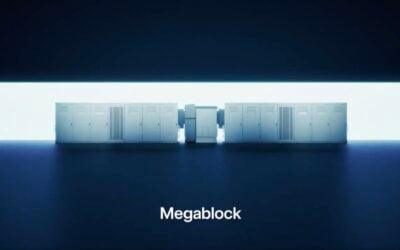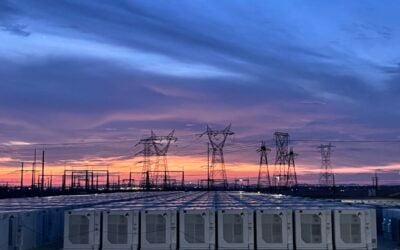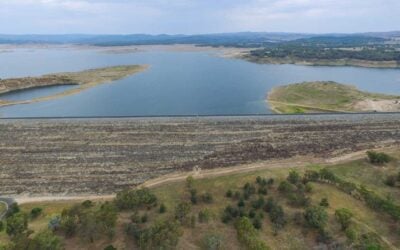
“The speed at which the inverters are operating, in terms of grid-forming mode, means that standby consumption will be higher,” said Dave Bowly, operations manager at Australian utility AGL.
Speaking at the Battery Asset Management Summit Australia 2025 last week, Bowly discussed some of the key aspects of operating a battery energy storage system (BESS) in Australia.
Among the various performance metrics that determine BESS efficiency and economic viability, standby consumption remains one of the most overlooked yet significant factors. This is especially true for grid-forming BESS installations, which are beginning to play an increasingly important role in grid stability and resilience.
Standby consumption represents the energy a BESS system consumes while in idle mode – when it’s neither charging nor discharging but maintaining operational readiness.
This article requires Premium SubscriptionBasic (FREE) Subscription
Enjoy 12 months of exclusive analysis
Already a subscriber? Sign In
- Regular insight and analysis of the industry’s biggest developments
- In-depth interviews with the industry’s leading figures
- Annual digital subscription to the PV Tech Power journal
- Discounts on Solar Media’s portfolio of events, in-person and virtual
Or continue reading this article for free
Already a subscriber? Sign In
According to Bowly, this consumption is not merely theoretical; it directly impacts the bottom line of storage projects and can significantly affect their long-term economics.
“From an asset management perspective, that [standby consumption] might not impact you very much, but from a trading perspective, it certainly does,” Bowly explained.
“In simple terms, if you don’t allow any energy past the gate and you come back a few hours later, a grid-forming inverter will generally have consumed more on its own state-of-charge (SOC) than a grid-following inverter. That’s just something to think about in terms of the economics.”
Several essential subsystems contribute to standby consumption in grid-forming BESS installations.
The thermal management system represents a significant portion of this consumption, as battery storage systems must be maintained within specific temperature ranges to prevent degradation and ensure safety.
Control systems, which are particularly sophisticated in grid-forming configurations, also require continuous power to maintain their operational state.
A core metric for evaluating standby consumption is the measured standby loss—the percentage of SOC lost in a given period without any power flow in or out of the battery system. Parasitic loads, such as the thermal management system, control power, and cell balancing, can partially account for these losses.
Learnings from other industries
Another panellist, Stephen Richardson, principal engineer of DC systems at Energy Queensland, believes that the energy storage industry, which is still fairly new, can take some learning from other markets to become the “best” in the business.
“We need to have a look at some of the other industries and how they do things. There are good parts in every industry. Have a look at them, see how they can apply to yours, and bring them in,” Richardson began.
“Yes, it might be coal and gas. It might be the motor industry. It doesn’t matter what discipline it’s from; if it works, make it work for energy storage, because there’s a reason it works over there.
“Understand why it works, bring those learnings back across, and adapt them and make them work for your energy storage. You will find, over time, that type of approach is much more creative in its solution.”
In doing so, Richardson believes that cherry-picking the best parts of several industries, no matter what they are, could be adapted to help make the energy storage industry more cohesive and successful.
The 2024 Summit included innovative new features including a ‘Crash Course in Battery Asset Management’, Ask-Me-Anything formats and debate-style sessions. You can expect to meet and network with all the key industry players again in 2025 from major US asset owners, operators, RTOs and ISOs, optimizers, software and analytics providers, technical consultancies, O&M technology providers and more.
InterContinental London – The O2, London, UK
This isn’t just another summit – it’s our biggest and most exhilarating Summit yet! Picture this: immersive workshop spaces where ideas come to life, dedicated industry working groups igniting innovation, live podcasts sparking lively discussions, hard-hitting keynotes that will leave you inspired, and an abundance of networking opportunities that will take your connections to new heights!
Read Next
Tesla announced its new integrated 20MWh battery energy storage system (BESS) solution, the Tesla Megablock, on 8 September in Las Vegas, US.
“Social licensing is the next frontier for battery energy storage systems,” said Matt Baumgurtel, partner, new energy lead at Hamilton Locke.
Andrés Barberán, energy storage product manager at Fluence, emphasises that optimising battery energy storage system (BESS) performance means making decisions with the entire asset lifecycle in mind, not just immediate returns.
A 12GWh pumped hydro project and a 1,200MWh battery energy storage system in New South Wales (NSW) have been submitted to Australia’s Environment Protection and Biodiversity Conservation (EPBC) Act.






